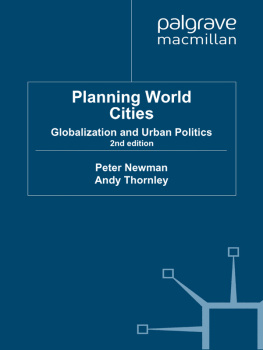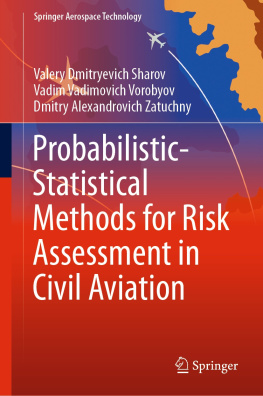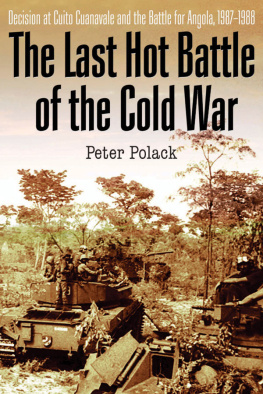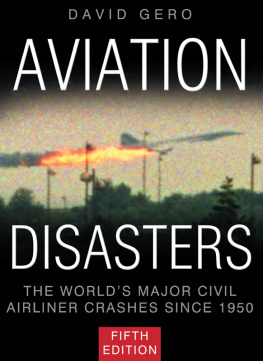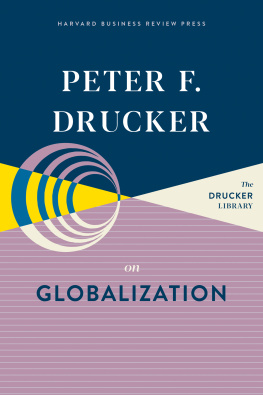Peter Svik - Civil Aviation and the Globalization of the Cold War
Here you can read online Peter Svik - Civil Aviation and the Globalization of the Cold War full text of the book (entire story) in english for free. Download pdf and epub, get meaning, cover and reviews about this ebook. publisher: Springer International Publishing, genre: Politics. Description of the work, (preface) as well as reviews are available. Best literature library LitArk.com created for fans of good reading and offers a wide selection of genres:
Romance novel
Science fiction
Adventure
Detective
Science
History
Home and family
Prose
Art
Politics
Computer
Non-fiction
Religion
Business
Children
Humor
Choose a favorite category and find really read worthwhile books. Enjoy immersion in the world of imagination, feel the emotions of the characters or learn something new for yourself, make an fascinating discovery.
- Book:Civil Aviation and the Globalization of the Cold War
- Author:
- Publisher:Springer International Publishing
- Genre:
- Rating:5 / 5
- Favourites:Add to favourites
- Your mark:
- 100
- 1
- 2
- 3
- 4
- 5
Civil Aviation and the Globalization of the Cold War: summary, description and annotation
We offer to read an annotation, description, summary or preface (depends on what the author of the book "Civil Aviation and the Globalization of the Cold War" wrote himself). If you haven't found the necessary information about the book — write in the comments, we will try to find it.
Peter Svik: author's other books
Who wrote Civil Aviation and the Globalization of the Cold War? Find out the surname, the name of the author of the book and a list of all author's works by series.
Civil Aviation and the Globalization of the Cold War — read online for free the complete book (whole text) full work
Below is the text of the book, divided by pages. System saving the place of the last page read, allows you to conveniently read the book "Civil Aviation and the Globalization of the Cold War" online for free, without having to search again every time where you left off. Put a bookmark, and you can go to the page where you finished reading at any time.
Font size:
Interval:
Bookmark:

The Palgrave Macmillan series, Security, Conflict and Cooperation in the Contemporary World aims to make a significant contribution to academic and policy debates on cooperation, conflict and security since 1900. It evolved from the series Global Conflict and Security edited by Professor Saki Ruth Dockrill. The current series welcomes proposals that offer innovative historical perspectives, based on archival evidence and promoting an empirical understanding of economic and political cooperation, conflict and security, peace-making, diplomacy, humanitarian intervention, nation-building, intelligence, terrorism, the influence of ideology and religion on international relations, as well as the work of international organisations and non-governmental organisations.
More information about this series at http://www.palgrave.com/gp/series/14489

RichardBakerUSA / Alamy Stock Photo
This Palgrave Macmillan imprint is published by the registered company Springer Nature Switzerland AG
The registered company address is: Gewerbestrasse 11, 6330 Cham, Switzerland
This book would not be possible without the kind help which I have, over years, received from Kiran Klaus Patel, Wolfram Kaiser, Olaf Mertelsmann, Robert van der Linden, Helmuth Trischler and Wolfgang Mueller. I am also indebted to the Estonian Science Foundation, Smithsonian National Air and Space Museum, Gerda Henkel Foundation, Deutsches Museum and FWF-Austrian Science Fund for providing me with long-term financing necessary for carrying out this book project. I am also grateful to my mother-in-law who had aided me with some translations from the Russian. My special thanks go to Alan Dobson for his first-hand comments and suggestions as well as language editing. The book also greatly profited from critical feedback I received from series editors, Effie Pedaliu and John Young, and anonymous peer-reviewers. At Palgrave, I would like to thank Molly Beck, Maeve Sinnott, Joseph Johnson and Azarudeen Ahamed Sheriff for taking care of this book and kind assistance with all technicalities. At the same time, I feel necessary to absolve all persons mentioned above from any responsibility for the content and eventual mistakes which, despite all efforts on my part, critical reader may eventually find in this work.
This research was carried out with the financial support of the ERMOS programme (co-funded by Marie Curie Actions) within the project ERMOS98 and was also supported by the Lise Meitner programme of the Austrian Science Fund FWF under the number M 2189.
Some minutes later it snarled its ponderous way up to the control tower and stopped, looming over the buildings and dwarfing everything about it. Conventional airline stairs which were brought up and fully elevated got nowhere near the passenger doors. A narrow 10ft ladder, let down by the crew from the forward door, just made contact; and down this stairway from heaven, after a time, came thirty or forty Russians, including Mrs. Tupolev.
Writing from the 1959 Paris air show, the journalist regarded the demonstration of the new Soviet long-range liner as a crowning event of the whole fair.
Albeit rather troubled by the necessity to exit the plane in an un-dignifying way and one far away from normal protocol by an on-board emergency ladder, which connected with the standard stairs in mid-air, a bulky Mr K enjoyed the triumph. Unlike during the 1955 Geneva Summit when his plane looked like an insect next to the planes that delivered Dwight Eisenhower , Anthony Eden , and Edgar Faure , four years later he flew to America non-stop, aboard the largest passenger plane of the day.
It was a perfect promotional storm and demonstration of power. In todays globalised world of open skies and mass air travel carried out by super-jumbos like the Boeing B-747 or Airbus A-380 , much of the power allure which planes used to have in the past has now vanished. In the end, in an environment of ever-increasing oil prices and ever stricter environmental regulations because of the global warming, more mundane matters govern these days rather than aviation challenges. To borrow a famous headline of Bill Clinton s 1992 US presidential campaign now its the economy, stupid.
However, while the connection between the prestige, the fascination [with aeroplanes] and the national interest might have weakened, it was at the heart of why international civil aviation [became] a serious problem in international relations. None of the published studies has, however, studied civil aviation affairs from a larger EastWest perspective, nor have the authors approached their respective research from a consequently transnational or global viewpoint.
Font size:
Interval:
Bookmark:
Similar books «Civil Aviation and the Globalization of the Cold War»
Look at similar books to Civil Aviation and the Globalization of the Cold War. We have selected literature similar in name and meaning in the hope of providing readers with more options to find new, interesting, not yet read works.
Discussion, reviews of the book Civil Aviation and the Globalization of the Cold War and just readers' own opinions. Leave your comments, write what you think about the work, its meaning or the main characters. Specify what exactly you liked and what you didn't like, and why you think so.



